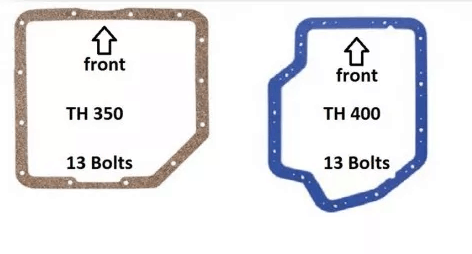Nearly all of the GM automatic transmissions have a few things in common. They are all made of aluminum. The Turbo 350 is arguably GM’s most popular automatic transmission with the aftermarket even today. This is espescially true for the people who are still using the generation I and II small-block Chevy.
Although the TH350 has been phased out for more than 20 years, you can still find one in the salvage yard. You certainly should not depend on the tech working at the yard for confirmation of what you have. You’ll certainly find them at swap meets and craigslist. Do not depend on someone’s word when they tell you that they have something. I am not saying that people are liars. Most of the time they are not. It’s often the case that the part you are looking at has been sitting around someone’s garage for a long time and they don’t perfectly recall what they have.
There are a few things that all of the longitudinal gm automatic transmissions have in common. They all have basically the same bolt pattern on the bellhousing. Although if you use an older transmission with a newer “LS” engine, you’ll have an extra bolt. But, they do not all bolt into the crossmember in the same space. They are also not the same length. Therefore, they are not all naturally compatible with one another.
[the_ad id=”1070″]
Identifying the TH350 the Easy Way
Certainly the easiest way to identify a GM automatic transmission is by the bolt pattern. The TH350 has a 13 bolt pan gasket. This is a fine way to whittle what you have in front of you. If you counted 13, you are either looking at the Turbo 350 Transmission or the Turbo 400.

You’ll also notice that the pan on the turbo 400 has quite a few more angles than the turbo 350. So, if your pan doesn’t look like a square with a corner taken out than you may want to move along.
Although they aren’t very common, there is a transmission based on the TH35o known as the TH250. It’s visually similar to it’s bigger sibling, but lacks the capability to handle a lot of torque. GM often bolted it behind it’s more anemic six cylinder engines.
It’s gosh darn tough to identify one visually. You’ll need to look above the coolant line fittings to see if there is a threaded screw there. It’s for band adjustment. Most of the info on this site I just know. In this particular case I found that right here:
http://www.chevytalk.org/fusionbb/showtopic.php?tid/76234/
Using the ID Tag for Identification
Really it is a lot easier to ID a transmission visually compared to the alternative of decoding it, but it is reasonable to try and understand exactly what you have. Now, for the the purpose of this guide there are two different ways that GM printed the the serial label. They changed the way that they labeled their transmissions for the 1967 model year. The TH350 began production in the 1969 model year. That would put it squarely in the second era, and this is how it went.
You’ll need to find the ID tag before you get anywhere. This can be extremely difficult on the TH35o particularly because the ID tag can be found on several different places on the transmission. It can be found on:
- Near where the shift linkage attaches to the body
- Just above the housing on the right side of the pan
- On the passenger side on a flange by the bellhousing
So, you if you are trying to wiggle under a car to read this thing it can be very problematic. You’ll not only need to hunt for this thing, but it needs to be free of enough grime to be legible.
You’ll be looking for these numbers on the ID tag in order to properly tell exactly what kind of transmission that you are dealing with. Most gm transmissions use the M RPO code. Here is a pretty complete list of all of them from the folks over at NastyZ28. The more common ones are:
- MV4- This code identifies your turbo 350 as a “C” model, which had a locking torque converter. This code was used for ten years from 1976 to 1986.
- MX2- Another 350C code. Found on 76-84 models
- MX3- Another Turbo 350C code. 1976-1981 model years.
- MX5- Turbo 350C, 1982 and 1983 only.
- M33- This standard Turbo 350 code identifies it as a standard THM350. This version did not have a locking converter. This one was manufactured from 76-81.
- M38- Standard Turbo 350 manufactured from 1976 to 1981.
